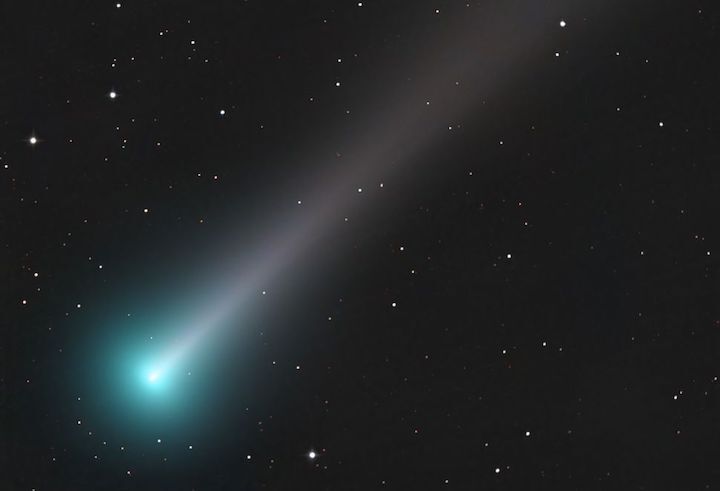5.01.2022

Astrophotographer Chris Schur captured this stunning photo of Comet Leonard on Dec. 4, 2021 from Payson, Arizona using a 10-inch Newtonian telescope and 60-minute camera exposure. (Image credit: Courtesy of Chris Schur)
The brightest comet in the night sky right now makes its closest approach to the sun Monday (Jan. 3) and — even if it survives the journey — that will be the only time the comet sees our star close up.
That icy wanderer is Comet Leonard, which got brighter unexpectedly in late December as it drew closer to the sun, according to EarthSky. Skywatchers even had a chance to see the comet and planet Venus in the same binocular view as Leonard made its closest approach to Venus on Dec. 17.
Comet Leonard, also known as comet C/2021 A1, was discovered on Jan. 3, 2021 and is a great target for amateur astronomers. If you're looking for a telescope of binoculars to objects like it, check out our guide for the best binoculars deals and the best telescope deals on right now. Our best cameras for astrophotography and best lenses for astrophotography guides also have tips on how to pick the best imaging gear to snap photos.
Leonard's perihelion — or closest approach to the sun in its orbit — coincidentally takes place just hours before Earth's own perihelion on Tuesday, Jan. 4, at 1:52 a.m. EST (0652 GMT). But Leonard's journey will be a much more of a close approach than that of the Earth's.
The comet will approach our sun at a distance of roughly 56 million miles (90 million kilometers), which is about half that of Earth's distance to the sun. Leonard will have to survive the sun's intense gravitational force at that distance, along with the solar wind. So like many other comets making that close swing by the sun, there's a risk Leonard may fall apart. But even if the comet survives the journey, NASA said in a statement, "its trajectory will fling it into interstellar space, never to return."
NASA notes that Leonard made a 40,000-year journey to our sun from the outer solar system, but the comet was only discovered on Jan. 3, 2021 – just one year before perihelion.
"That is strictly coincidental, but I like coincidence," comet discoverer Gregory Leonard, a senior research specialist at the University of Arizona's Lunar and Planetary Laboratory, told Space.com in December.
Quelle: SC

